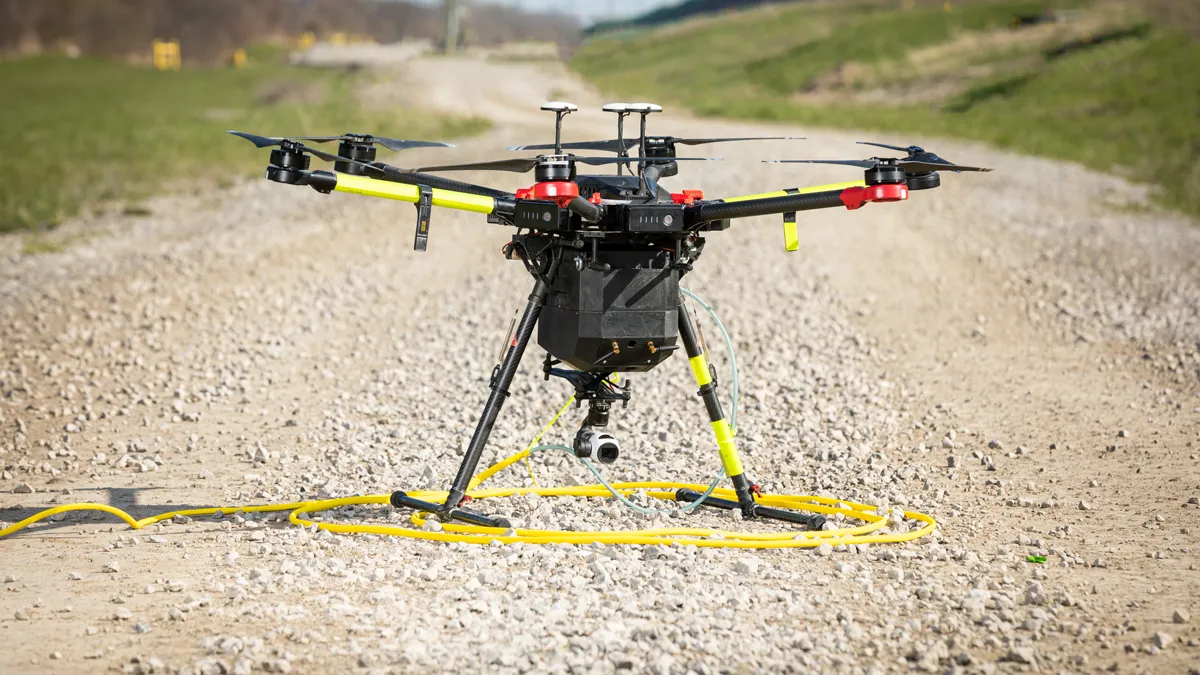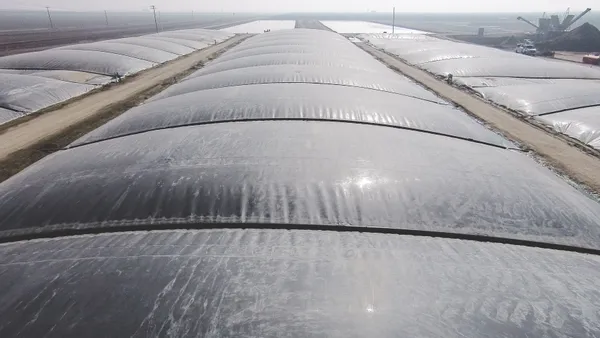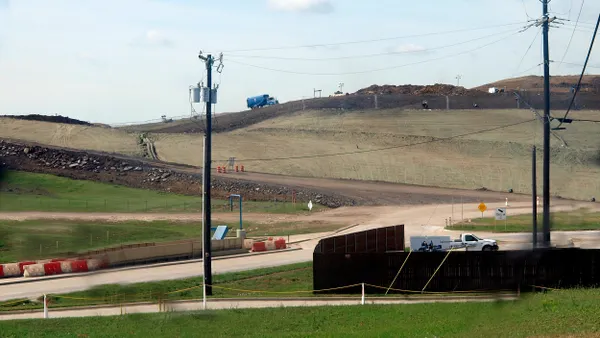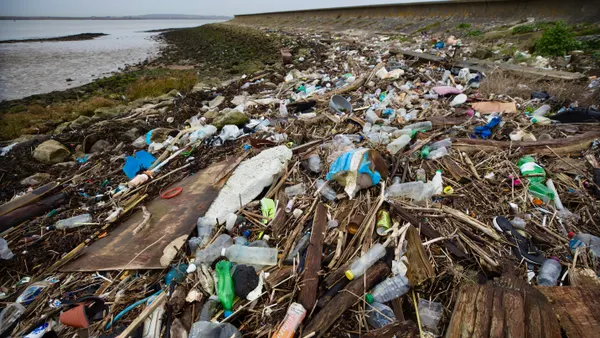Dive Brief:
- Hamm, the owner and operator of a landfill in Lawrence, Kansas, agreed to pay a $4,206 civil fine and use drones and light detection and ranging technology to monitor methane emissions and ensure the landfill's cover integrity, the U.S. EPA’s Region 7 announced last week.
- Inspectors determined that the landfill violated Clean Air Act regulations during a site visit in March 2022. Hamm allegedly exceeded methane emissions standards and failed to correct the emissions, per a release.
- Hamm is expected to pay about $30,000 to implement the technologies. The operator proposed using Sniffer Robotics' drones for its monitoring, according to EPA. It's the first settlement involving the use of drones for surface emissions monitoring, an EPA spokesperson said via email.
Dive Insight:
Landfill operators are increasingly considering the use of drones to track methane emissions as the technology has improved. In California and Pennsylvania, federal agencies have coordinated with state regulators to pilot the use of satellites and other technologies to monitor landfills and identify methane plumes that might otherwise have been overlooked.
The push to better capture emissions from U.S. landfills comes as researchers have found large plumes of methane and other gases that have gone undetected from the facilities. Landfills are the largest industrial methane emitters in 37 states, according to research by climate solutions group Industrious Labs.
The federal government is ramping up efforts to modernize its approach to landfill emissions monitoring. In an interagency strategy released in November, the Biden administration acknowledged that existing surface emission monitoring practices can't detect all “anomalous emissions” at a landfill. The strategy said that agencies like NASA, EPA and others are conducting monitoring pilots that use airborne sensors and commercial satellite data to track emissions and improve the accuracy of emissions models.
Last year, the EPA approved the use of Sniffer Robotics’ unmanned aerial systems at MSW landfills to comply with Clean Air Act regulations. The company was in the approval process for about four years, according to a release.
In its response to Sniffer Robotics’ application, the agency noted that drone-based monitoring is "typically no less stringent and often more conservative" than traditional surface emissions monitoring methods. Most commonly, an inspector walks along a landfill with a monitor held close to the surface to screen for gas leaks, a practice that environmental groups and industry professionals alike have argued is becoming obsolete.
A comparison of findings from Sniffer's drones at four landfills compared to traditional SEM compliance methods found that the drones detected more than twice as many likely exceedances — up to 287 from 126, per the letter.
"With today's realization that industry needs innovative tools and improved methods to deal with methane emissions, we believe the SnifferDrone offers the industry the next and best step forward to better address emissions," the company wrote in a blog post hailing the approval.
In comments about the Kansas settlement, the EPA said a landfill operator wouldn’t necessarily need to use Sniffer Robotics for a settlement like Hamm’s, noting: "Other entities could be used to demonstrate compliance” with the regulation allowing Sniffer’s drones, “subject to some limitations in the methodology."
In addition to its Lawrence landfill, Hamm also operates a MRF and transfer station and provides hauling and recycling services. The company did not respond to a request for comment.
In August, the EPA declared landfill methane emissions an enforcement priority for the next four years, alleging “widespread noncompliance” among landfill operators. The industry has pushed back on that allegation, arguing that the agency is misinterpreting or relying on inaccurate data.











